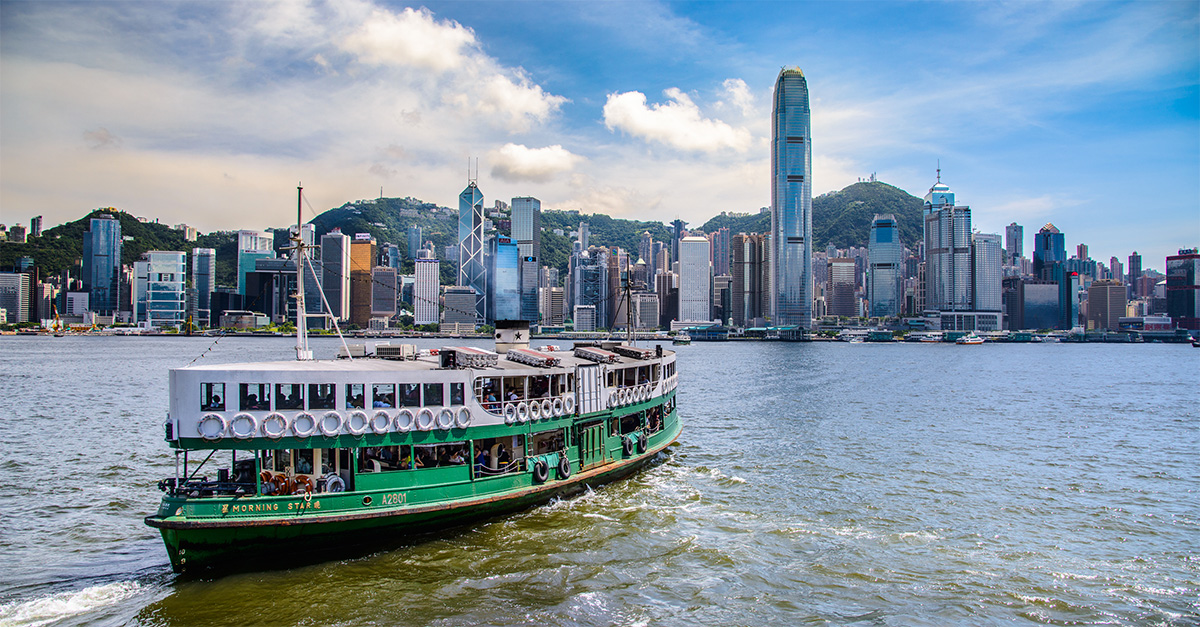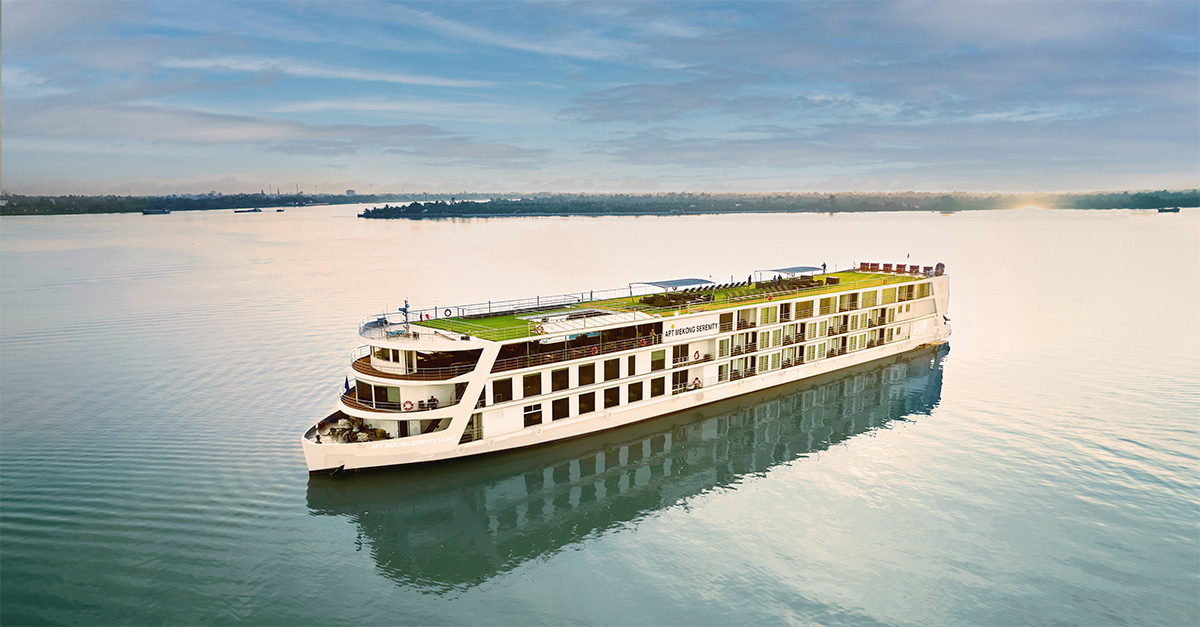Set your sights on one of Italy’s most underrated cities, says Katie McGonagle.
Click here to download and save as a PDF.
It’s the city of Shakespeare’s star-crossed lovers, but it wasn’t quite love at first sight on my initial visit to Verona. In fact, my abiding memory was of a long queue to see Juliet’s balcony and a sense of disappointment when we finally reached the courtyard and found it a little underwhelming.
How wrong I was. A return visit – with more time and fewer crowds – revealed a maze of medieval streets and ancient monuments, Renaissance buildings still bearing the faded frescoes of once-well-to-do families, and the easy-going vibe you’d expect of a sunny city break in northern Italy. Rome, Florence and Venice have their charms, but Verona is the surprise sequel.
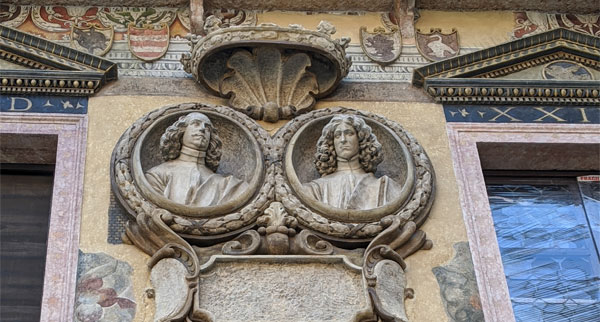
Day one
10.00: Start off in the Piazza dei Signori, the historic seat of power set in the city’s old town, surrounded by portico-fronted palaces and grand Renaissance edifices. It’s surprisingly serene, presided over by a rather pensive-looking statue of medieval poet Dante, who wrote part of his famous Divine Comedy here. He even dedicated it to his patron, Cangrande della Scala, a member of the city’s most influential ruling family in the 14th century. The family’s grand Gothic tomb (also called the Scaligeri Tombs) dominates the scene just a few steps from the square, an elaborate monument to the Della Scala dynasty adorned with wrought iron grilles displaying their ‘ladder’ (scala in Italian) symbol as well as showcasing their wealth and power to the world. Just around the corner, stroll past Casa di Romeo, the low-key medieval home to one of the real-life families said to have inspired the Shakespeare tale.
“The family’s grand Gothic tomb dominates the scene just a few steps from the square, an elaborate monument to the Della Scala dynasty.”
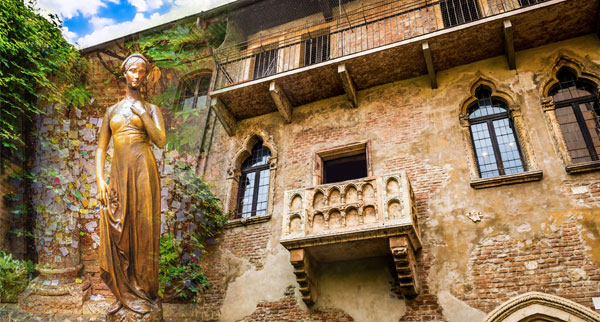
11.00: For anyone keen enough to seek out Romeo’s house, the next step must surely be Juliet’s balcony, just a short walk away. It’s true that this medieval manor house can be traced back to another Verona clan, the Cappellos, hence its link to the story of Juliet. Though before spending too long lining up to see it, visitors should be aware that the famous balcony isn’t original – it was added in the 1930s – while the bronze statue of Juliet is an even more recent addition. Nonetheless, if clients want their moment of romance inside the courtyard (or even on the balcony, for a €6 entry fee), this is the place to have it – especially since the site is looking smarter following a recent council‑led clean-up.
“Before spending too long lining up to see it, visitors should be aware that the famous balcony isn’t original – it was added in the 1930s.”
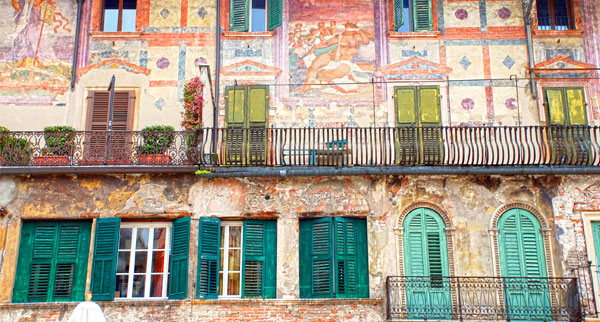
12.30: “Verona is not only the town of Romeo and Juliet,” says our guide, Katia Galvetto, bringing us back to reality. “It’s a town with an interesting history. That’s why Verona is so amazing. You can see its history developing over 2,000 years.” Nowhere is that clearer than in Piazza delle Erbe, once the Roman forum and now the city’s main market square, where even the central fountain of Madonna Verona is a hotchpotch of pieces from different eras. A baroque palace-turned-private art gallery sits at one end of the square, while Renaissance frescoes adorn the walls above awning-covered cafes and noisy market stalls. Browse the wares in the main square, then duck down one of its adjoining side streets for a light bite and an Aperol spritz away from the most touristy venues.
“A baroque palace-turned-private art gallery sits at one end of the square, while Renaissance frescoes adorn the walls above awning-covered cafes.”
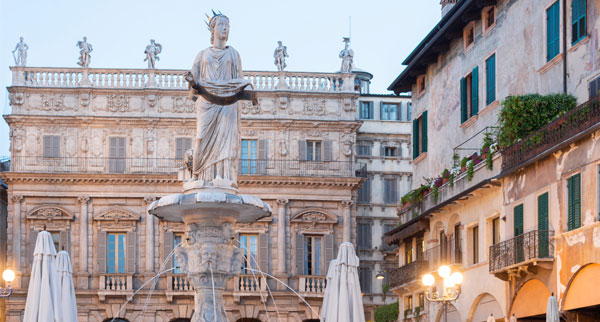
14.30: It’s time to climb the Torre dei Lamberti, the 12th-century clock tower that sits on the edge of the market square offering commanding views across the terracotta-roofed buildings that make up the city. There’s a lift for the faint-hearted (although beware that it still requires a few steps so may be challenging for those with mobility problems), but if you need to work off that lunchtime pasta, the stairs of this 84m-high monument are better than any workout. Entry is €8 and includes admission to the neighbouring Modern Art Gallery.
“It’s time to climb the Torre dei Lamberti, the 12th-century clock tower that sits on the edge of the market square offering commanding views across the city.”
15.30: Having spied Verona’s most famous monument from above, it’s time to investigate its Roman Arena a little more closely. Set off from Piazza delle Erbe along the main shopping street, Via Mazzini, to the sprawling square of Piazza Bra, where the striking facade of the first-century amphitheatre can’t fail to impress. It’s older than the Colosseum yet better preserved, and still regularly plays host to operas as well as mainstream music; even in summer 2020, the arena opened for concerts at around 50% of its usual 15,000 capacity. Tickets are on sale now for this year’s Arena di Verona Opera Festival, running from June 19 to September 4.
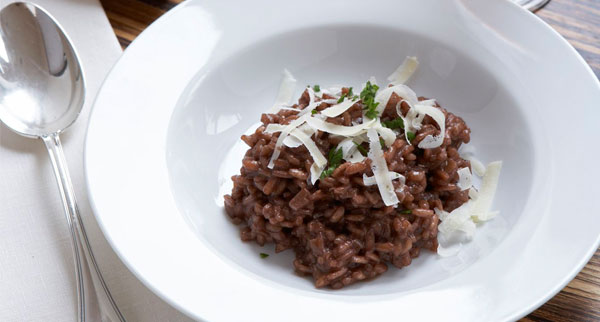
17.30: If your earlier window shopping was enough to entice you back, retrace those steps along Via Mazzini, where big brands from Disney to Dolce & Gabbana have found a home behind some rather grand porticoed shopfronts topped with wrought-iron balconies. You can even combine retail therapy with Roman history if you pop into the United Colors of Benetton shop, where ancient ruins were discovered deep in the foundations (though they’re off-limits for now due to coronavirus restrictions).
“Sample one of Verona’s classic dishes, the risotto all’amarone, a local take on the classic risotto that infuses the region’s famously full-bodied red wine.”
19.30: Head back to your hotel to freshen up before venturing out again to sample one of Verona’s classic dishes, the risotto all’amarone, a local take on the classic risotto that infuses the region’s famously full-bodied red wine to create a vibrant plate that tastes every bit as rich and indulgent as it looks. You’ll find it everywhere from elegant restaurants to traditional trattorias, but Antica Bottega del Vino is one of the best, with a wine menu as sizeable as its reputation.
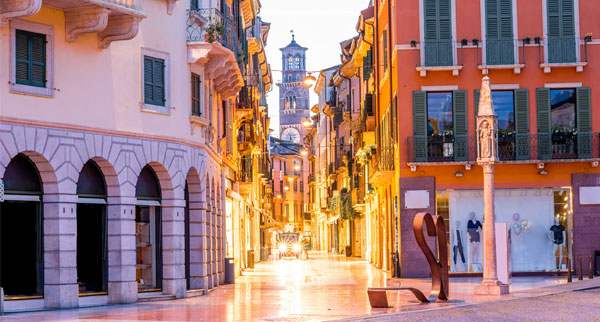
Day two
10.00: Start the day with a mix of art and history at the medieval fortress Castelvecchio, another legacy of the Della Scala family, which now houses a museum mixing statues, sculptures, paintings and historic artefacts and is well worth a few hours’ exploration. It’s attached to the Castelvecchio Bridge which – along with the Ponte Pietra a little farther along the river – was destroyed by German forces retreating from the city in 1945, but later rebuilt using the original stones retrieved from the riverbed.
“Start the day with a mix of art and history at the medieval fortress Castelvecchio, another legacy of the Della Scala family, which now houses a museum.”
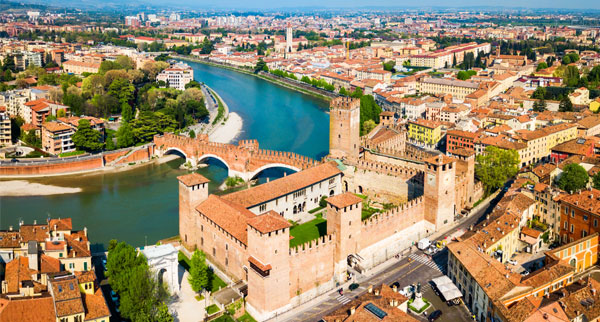
12.00: Stroll back through the old town, pausing to admire the Arco dei Gavi – once the start of the Roman road from Verona, later incorporated into its medieval city walls – or ducking inside the imposing red-brick Sant’Anastasia church. Then it’s time to stop for lunch at one of the simple osterias en route to the Ponte Pietra.
“If you fancy blowing the cobwebs away, the hike up to the castle site offers some pretty spectacular views over Verona and the Adige River.”
13.30: This much-photographed bridge is an ideal vantage point to admire the cypress-lined hillside leading up to the medieval Castel San Pietro and the Roman theatre, built for the emperor Augustus using materials from as far afield as Turkey, Spain and Africa, and yet another example of Verona’s tangle of architectural eras. If you fancy blowing the cobwebs away, the hike up to the castle site offers some pretty spectacular views over Verona and the Adige River – once the city’s main artery, but tamed to lower its water levels following a devastating flood in 1882 – meandering below.
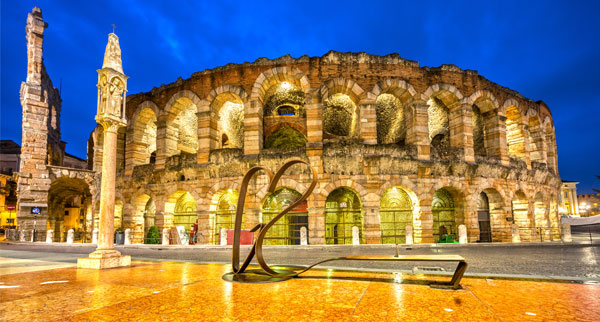
15.00: Stick with the great outdoors by carrying on to the Giardino Giusti, the manicured Renaissance gardens in the grounds of the palace owned by the family of the same name. It’s a pleasant way to spend an afternoon, ambling past dainty flowerbeds, burbling fountains and neatly planted cypress trees, or even trying to find your way through the twists and turns of its maze. If your clients skipped the hike at Castel San Pietro, the view from the belvedere, up a sweeping pathway to the top of the hill, is just as impressive. Alternatively, head back to the historic centre via the Ponte Nuovo to saunter through its maze of backstreets, soaking up the quiet charm of the city one last time.
“If your clients skipped the hike at Castel San Pietro, the view from the belvedere, up a sweeping pathway to the top of the hill, is just as impressive.”
Ask the expert
Thomas Morgan, head of agency sales UK & Ireland, Riviera Travel

“On my first visit to Verona I didn’t really know what to expect, other than Juliet’s balcony, but the city did not disappoint. My experience was as part of our guided tour and I believe that this is the best way to explore a city with so much history and wonderful architecture. If your customers get the chance on a clear day, I would recommend a walk up the Torre dei Lamberti for some great photo opportunities.”
Read more
Discover the wonders of Ljubljana, Slovenia’s compact capital
The best things to see, do and eat in Corfu Town
The best things to do in Riga, Latvia in summer or winter



